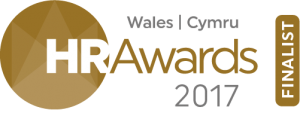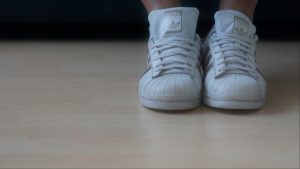 Super-pleased to announce that I am a finalist in the prestigious HR awards – in the Arts category.
Super-pleased to announce that I am a finalist in the prestigious HR awards – in the Arts category.
I have used art and ‘making’ to unlock creativity in people across a variety of sectors:
- Senior Partners of a law firm, Watkins & Gunn, have created abstract works of art
- Diverse staff teams within a housing association painted each others portrait
- A team of 30 walked Pen-y-fan and then painted a staff mural of their experience of that walk
- People created and then illustrated their own customer service principles concepts like integrity, equality and commitment
- A newly forming team in a charity created a painting of themselves and how they fitted in with the rest of the organisation
- Superdrug’s HR team created a ‘Picture of Innovation
How did this work come about?
Primarily through experimentation! There was no guide to follow. Through my own art practice as a painter, I had a hunch that the processes I went through could also be used within a team development context. I thus started integrating different art activities into my work. People painted, built models of their organisations out of scrap materials, used play doh to represent how their team worked together…
This experimentation has now resulted in a few solid techniques that I use in a range of situations. Two of these include Portraiture and Collaborative Painting.
Portraiture is a great tool for getting to know yourself or spending some quality time getting to know a colleague. Although it may sound daunting, with the right introduction, in a team development context it can be lots of fun but also a powerful tool for building trust, understanding and respect.
Collaborative painting is a way for a group to think about a theme, an issue or a challenge differently. It can be used with a small group of 5 or a larger group of 40. The larger the group- the larger the painting! Here people start to think metaphorically which is a great creative thinking tool. They start to think about colour and form. They begin to think in a more abstract way. They negotiate, problem solve, are asked to come to a consensus of opinion.
In doing this work I have learned much:
People love to engage in the tactile nature of painting and making. I think there is a latent hunger in us all for this kind of activity – it maybe a link to the innocence of childhood or a more fundamental need for us all to ‘play’ even as grown ups. Rarely has someone refused to take part or found they can not participate.
The activity allows for a different type of conversation. People almost ‘switch to a lower gear’ and converse lightly converse about non-work topics. It might include something about their home life they don’t often reveal or perhaps their childhood ambitions. Whatever it is- certain bonds are formed in the process.
If the theme is work based, then new ideas can form as people started thinking metaphorically linking images to concepts and even using different colours to represent their ideas. It surprises me how quickly this can happen. In the space of an afternoon a finance professional can start thinking more like a conceptual artist.
The unconvinced may still be asking: But how does this help the company? What’s the value to the bottom line?
People are complex beings. We try to put them in boxes with job titles and JDs and that sometimes forces people down a certain avenue of specialism. But people are more than that. The work I do opens them up, allows them to expand into other areas of themselves that have been neglected. After this expansion they return to their specialism richer, with a new experience and a revised ‘map of the world.’ Physically/ neurologically they have created more connections across the two hemispheres of the brain – so they are now different.
As a group they interact in a new way: hav abstract conversations about colour and form, or speak more openly about the,selves.
This is a space that the workplace doesn’t often accommodate. People can be released from the constant need for ‘outcomes’ and for a while ‘just be’, explore and create. This space helps to develop: trust; greater understanding of self and others; relationships and new ways of thinking. It also puts people on a level playing field the CEO might be the head of the company but chances are s/he can’t paint any better than anyone else in the business.
This work develops the ‘soft skills’ that makes a group of people a team, it builds committment, a sense of belonging and engagement.
What next?
I am building on this work and using it within a leadership setting. Over 2 days we will work within an art studio setting- working individually and then together to take leadership development to the next level. Find out more here.
If you would like to work in this way then please contact me today.
I look forward to working with you.


